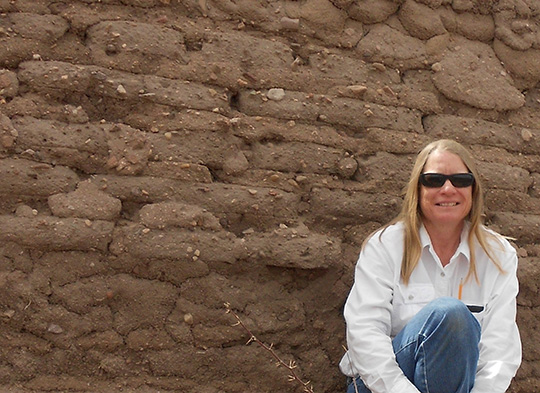March 2, 2016
Desert Foothills Chapter, Arizona Archaeological Society presents guest speaker Deni Seymour March 9
The Desert Foothills Chapter (DFC) of the Arizona Archaeological Society (AAS) is pleased to announce Dr. Deni Seymour an internationally recognized authority on protohistoric and historic Native American and Spanish colonial archaeology and ethnohistory on March 9th. For 30 years, she has studied the ancestral (Chiricahua, Mescalero, and Lipan) Apache, Sobaipuri-O’odham, and lesser-known mobile groups (Jano, Jocome, Manso, Suma, and Jumano). She has excavated two Spanish-period presidios (Santa Cruz de Terrenate and Tubac), several missions, and several indigenous sites. Dr. Seymour works with indigenous groups in reconnecting with their heritage, investigates Coronado and Niza expedition archaeology, and is rewriting the history of the pre-Spanish and colonial period in the southern portion of the Southwest.

Dr. Deni Seymour presents The Great Battle of 1698: A Historical Turning Point for the O'odham and Apache. Perhaps, the greatest historical event to have occurred in this region happened along the San Pedro River in the vicinity of Fairbank on Easter Day in 1698. This was the battle at Santa Cruz de Gaybanipitea, when 500 Apache and their allies attacked the still-sleeping Sobaipuri-O’odham village of 80. This village was visited by the Jesuit Father Eusebio Kino in the 1690s. Against all odds, the Sobaipuri-O’odham won the battle. The story is remembered because it was retold and recorded by a number of Spaniards, including by Padre Kino, but fresh understandings are now available that make the story even more important. Seymour corrects the historical record with new translations of historic battle-related documents. She moves beyond what the Spanish conveyed about the battle to include results of archaeological excavations and analysis with application of O’odham-specific cultural information that explains a number of problems including why Kino was delayed in his inspection of the battlefield. The reasons for the battle are discussed and long-held questions are answered including the role of the Spaniards, routes of retreat, evidence of ritualized site cleansing, how we can be certain about the correct location, and where specifically the Sobaipuri went after the battle. A newly identified battlefield signature is discussed based on projectile point breakage patterns. Projectile points also provide important indicators of the various ethnic groups involved: the Jocome, Jano, Manso, Suma, and Apache.

Dr. Deni Seymour has published extensively on these groups and this period, with more than 80 publications in referred journals, edited volumes, and popular venues, and has served as journal guest editors. She has published five books with another two under review. Dr. Seymour is a full-time research archaeologist and ethnohistorian, public speaker, and author affiliated with two academic institutions and the nonprofit research group Jornada Research Institute.
The general public may attend an Arizona Archaeology Society – Desert Foothills Chapter meeting at no charge, except for the holiday party in December. The AAS-DFC meetings are held on the second Wednesday of each month, September through May.
There are refreshments available at 7 p.m. and the meeting begins at 7:30 p.m., usually ending prior to 9p.m. The meetings are held in the community building (Maitland Hall) at The Good Shepherd of the Hills Episcopal Church, 6502 East Cave Creek Road, Cave Creek, AZ 85331.
Visit www.azarchsoc.org/desertfoothills.


